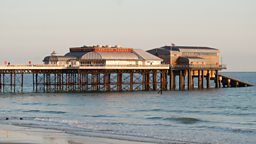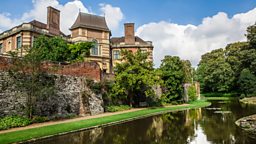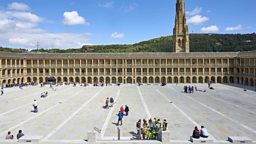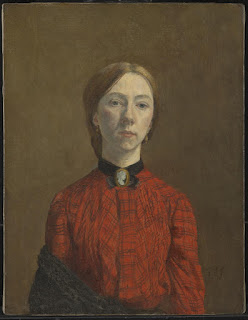He was a gifted painter in his younger
years.
He was also an architect,designed furniture, textiles, wallpaper
and rugs. He worked in Bronze, silver, wrought iron, wood ceramics
and silver.
But he is mostly known for glass.
“I have always striven to fix beauty
in wood or stone, or glass or pottery, in oil or watercolour, by
using whatever seemed fittest for the expression of beauty; and I see
no reason to change it.”
He expressly refrained from imitating by striving for a new medium.
“God has given us our talents not to
copy the talents of others, but rather to use our brains and our
imagination in order to obtain the revelation of true beauty.”
He searched also for new technical
inventions that could help him with his restless ideas.
 The son of Harriet and Charles Lewis
Tiffany, New York. He was the founder of Tiffany & Co a purveyor
of jewelry silver objects and timepieces.
The son of Harriet and Charles Lewis
Tiffany, New York. He was the founder of Tiffany & Co a purveyor
of jewelry silver objects and timepieces.
That name had become a
byword for luxury and craftsmanship. Opening in 1837 by the 1870's
his Fifth Avenue store became the place where presidents would buy
gifts for royalty and heads of state. By 1900 they had 1,000
employees around the world.
Louis showed no interest in joining the
family firm instead he went to Eagleswood Military Academy in Perth
Amboy, New Jersey.
In 1865 he toured Europe.
While in London he
visited the Victoria and Albert Museum and the Roman and Syrian glass
made a monumental impression on him.
This same museum now has a
collection of Tiffany Glass.
On return to New York he enrolled in the
National academy of Design and exhibited, in 1867 paintings that were
inspired by his European travels.
He worked alongside George Innes
(1825-1895). He was part of The Hudson River School.
They both enjoyed a
love of nature.
Innes had a dialogue with the Babizon
school of painters who worked near Fontenbleau.
Tiffany went back to Europe in 1868
where he met Leon-Charles-Adrien but could not work within his strict
regime. He then met Leon-Adolphe-Auguste Belly (1827-1877) who was a
painter in the exotic and orientalist style and exhibited at the
Salon.
On return to New York he met Samuel
Colman at the Century Club.
While travelling separately they met in
Granada and decided to travel on to Egypt and Africa together.
Morocco, Tangier where he painted the
Souks. then to Tunisia and Egypt they often painted the same
subjects.
He began to love Islamic art and
started collecting glassware and other objects. These pieces would
lead to later inspiration. He took photographs and would use these
later to recall his influences.
1878 would see him exhibiting street
scenes of New York at the Paris Exhibition Universalle of 1878.
He received many awards and showing his
work at 27 different exhibitions by the age of 21.
He formed the
society of American Artists along with John Singer Sargent and James
McNeil Whistler. He realised his lack of classical training would
always hinder him and his vast wealth gave him the opportunity to
follow a avenue less crowded where those with more skills would
outshine him.
His works of this period is now valued for its skill
and approach and highly valued.
His acquired sense of colour and his
experiences would lead him into creating glass.
Industrialisation would give new
opportunities and the demand for luxury items to fulfil the ambitions
of the new rich industrialists led him to draw on his fathers
reputation.
He formed a Interior design company
that lasted for four years. He would encompass many variations of design
and was inspired by the Arts and Crafts movement and in particular
William Morris who was enlightening the world to medieval design and
craftsmanship.
Art Nouveau, was the breath
of fresh air that filled his lungs.
Tiffany would be inspired by art
nouveau and its principle designers but would look to nature for his
own special style. In 1882 he had received a commission from President
Arthur who was a New Yorker to redecorate the Whitehouse where he
would install a three part glass screen to separate the public and
private areas.
Twenty years later Theodore Roosevelt would remodel
the Whitehouse again. This time in a Neo-Classical style.
He and his associates decorated houses
for some of the most wealthy people including Andrew Carnegie
Cornellius Vanderbilt II and the writer Mark Twain. He split with his
associates in 1883 and was free to explore his own independent
projects.
 He loved old glass and the way minerals
in the soil had effected the glass when buried for ages. Glass that
dated back to 1450 BC from Egypt was often thought as the earliest
and Syrian glass blowing using a hollow pipe was invented in the 1st
century B.C. Glass is mentioned alongside gold and precious stones in
the bible as a precious commodity.
He loved old glass and the way minerals
in the soil had effected the glass when buried for ages. Glass that
dated back to 1450 BC from Egypt was often thought as the earliest
and Syrian glass blowing using a hollow pipe was invented in the 1st
century B.C. Glass is mentioned alongside gold and precious stones in
the bible as a precious commodity.
In the mentioning these treasures, only glass is
made by hand.
Tiffany would go on to form a reputation that has not been equalled.
This small bowl infused with blue and greens is only 5inches wide. But a object of exceptional beauty.
This small bowl infused with blue and greens is only 5inches wide. But a object of exceptional beauty.
Part One: more to follow soon.
This piece is no longer available Sorry.
This piece is no longer available Sorry.

















